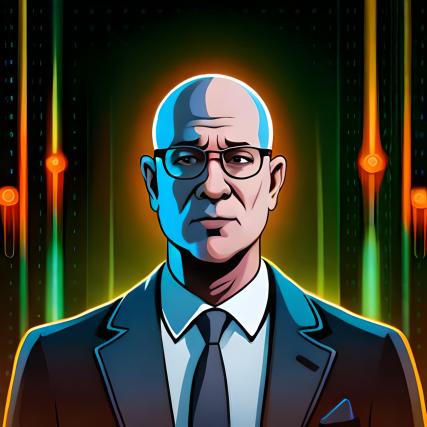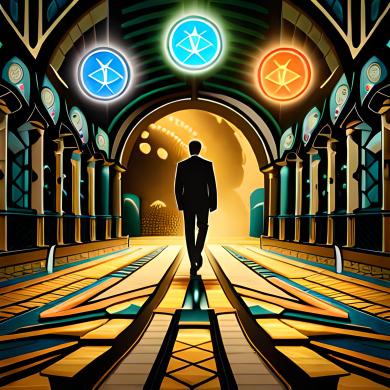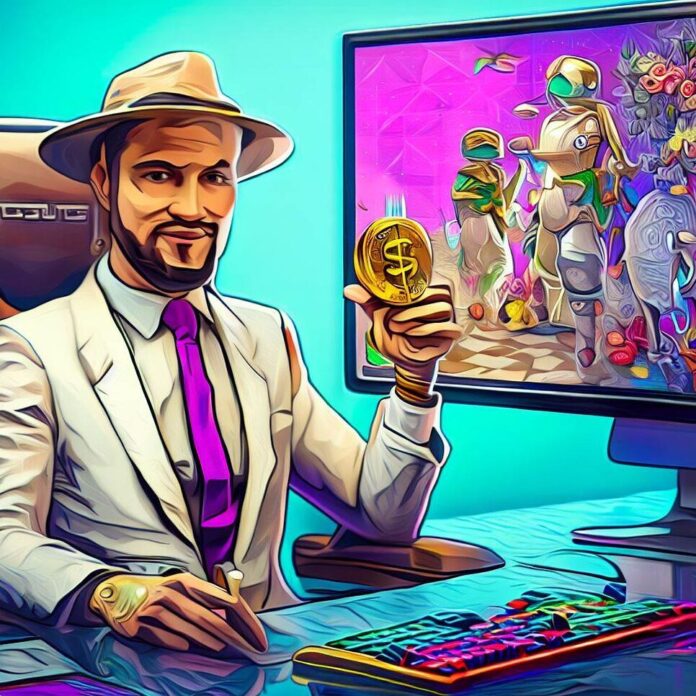NFTs or Non fungible tokens are among the most talked about trends in the cryptocurrency domain. They are digital assets that are unique and rare. Items such as photos, music, artwork, collectibles, gaming assets and more can be part of NFT. But what is NFT and how NFTs work? and what are the benefits? In this blog post we will explore these questions and more.
What is NFT and How NFTs Work?
An NFT is a specialized type of token that exists within a blockchain, which utilizes decentralized network to record transactions and data in a Ledger while ensuring its security & immutability. Unlike standard tokens, such as Bitcoin or Ethereum which are fungible means it can be interchanged with other tokens of equal value. NFTs are non-fungible and unique making them irreplaceable. Each NFT has a distinct identifier and metadata that set it apart from any other NFT providing a transparent record of ownership and authenticity.

- An NFT is stored on a blockchain which is a digital ledger that ensures security and transparency of transactions.
- An NFT can be associated with a digital or physical asset such as an image, song or video clip.
- NFTs prove ownership and authenticity of the linked asset.
- NFTs are not interchangeable like cryptocurrencies and are unique in nature.
- Each NFT has a unique identifier and metadata that differentiate it from any other NFT.
How to Create an NFT –
To generate an NFT you must possess a digital asset that you wish to tokenize (transform into an NFT) and a platform that facilitates NFT creation and trading. Several platforms are available for buying, selling and trade like OpenSea, Rarible and Binance NFT Marketplace permit you to create and sell NFTs using various blockchains such as Ethereum chain, Binance Smart Chain and Polygon MATIC chain to store and verify the NFTs. Additionally you must have a cryptocurrency like ETH or BNB to fund the transaction fees (also known as gas fees) involved in generating and transferring NFTs.

To create an NFT you must upload your digital asset to the platform of your choosing and fill in relevant details such as its name, description and price. You can also add other features such as rarity, royalties (a percentage of future sales you will receive) or lockable content (hidden content only the owner can access) to your NFT. Once generated then your NFT will be minted (created) on the blockchain and you will be assigned a unique token ID and contract address. You may then list your NFT for sale on the platform’s marketplace or auction it off to the highest bidder.
How to Buy NFT –
Purchasing an NFT is also a straightforward process and it is open to anyone who is interested in owning a unique digital asset. The basic steps are –
- Choose a blockchain platform that supports NFTs. Ethereum, Binance Smart Chain, Flow and Tezos are some of the most popular ones.
- Select an NFT marketplace that offers the type of NFTs you are interested in purchasing. OpenSea, Rarible, Mintable, Binance NFT Marketplace and Foundation are some of the most well known marketplaces.
- Create a wallet that is compatible with both the blockchain platform and the marketplace. A wallet is a software app or can be hardware device that stores your private keys and enables you to send and receive cryptocurrencies. MetaMask, Trust Wallet and Ledger Nano S/X are some of the most commonly used wallets for crypto transactions.
- Fund your wallet with enough cryptocurrency to purchase your desired NFT. You can purchase cryptocurrency from various crypto exchanges or platforms using fiat money or other cryptocurrencies.
- Browse or search for the NFT you want to purchase on the marketplace and either place a bid or buy it outright.
- Confirm your transaction on your wallet and pay the gas fee.
- Receive your NFT on your wallet or on the marketplace.
What are some NFT examples? From Art to Music to Gaming –
NFTs can stand for any digital or physical object that possesses value and singularity. Some of the most prevalent examples of NFTs are –
NFT Art – Digital artworks that can validated and authorized by the blockchain. Some of the most renowned NFT artists include Beeple who sold a compilation of his daily creations for $69 million at Christie’s auction house and CryptoPunks who designed 10,000 pixelated characters that have become highly coveted collectibles.
NFT Music – Digital songs or albums that can encoded with the blockchain. Some of the most notable NFT musicians include Kings of Leon who released their latest album as an NFT with exclusive advantages and rewards, and Grimes who sold a collection of her original music and visual art for $6 million.
NFT Games – Digital games or items that are powered by the blockchain. Some of the most popular NFT games include CryptoKitties, which allows users to breed and trade virtual cats with unique attributes and genes and Axie Infinity which is a fantasy game where players can own and battle creatures called Axies.
NFT Marketplace – Online platforms is where the users can buy, sell and trade NFTs. Some of the most well-known NFT marketplaces include OpenSea which is the most extensive and varied marketplace for NFTs and Rarible which is a community-owned marketplace where anyone can generate and sell their NFTs. Binance NFT Marketplace for Binance smart chain BEP20.
Benefits of NFTs –
NFTs provide several advantages including the ability for creators to monetize their digital work in innovative ways. By producing and selling NFTs, artists and creators can gain more exposure, recognition, and revenue for their digital creations. They can also maintain ownership of their work and earn royalties every time their NFTs are resold on secondary markets.
Furthermore, NFTs offer collectors and fans a unique method of owning and enjoying digital items. Through purchasing NFTs they can support their favorite artists and creators as well as obtain rare and valuable assets that may appreciate in value over time. They can also showcase their NFTs in virtual galleries, social media platforms or online games adding to their appeal and prestige.




